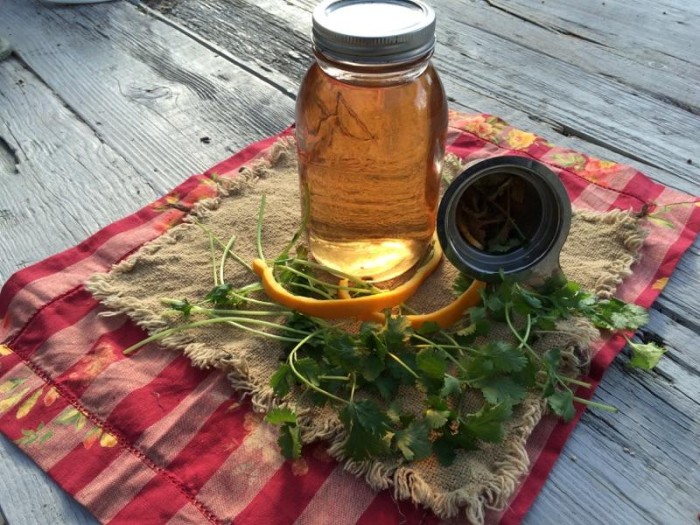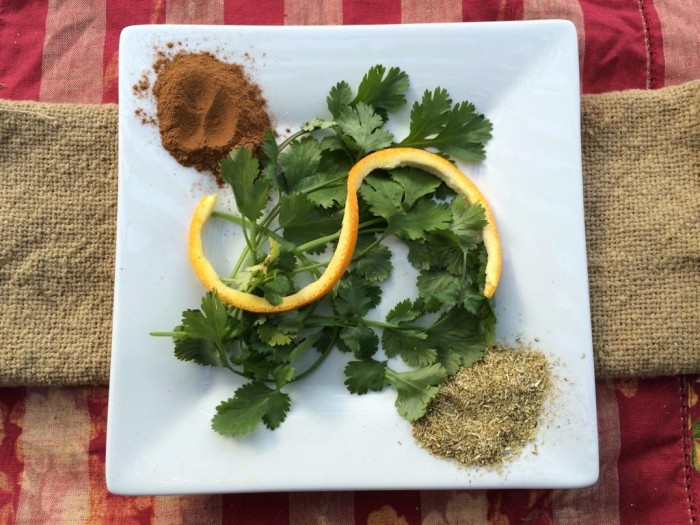Legends say that tea originated when some leaves fell accidentally into a cup of water. One person’s serendipitous discovery has evolved over the centuries into an elaborate culture of blends and mixtures. The modern complexity of tea drinks, especially infusions, most surely would have made that early unintentional innovator’s head spin.
However……
Tea Infusion Does NOT have to be complicated!
Infusion is a term that means different things to various people. Infusion, the process, removes some of the chemical make-up of a material and passes it into a solvent, simply taking the leaves and/or herbs and releasing some of their compounds into another form i.e. the water.
Other solvents can be used such as alcohol or oil, but there are different terms for those. Here and now we are ONLY focusing on infusing tea and herbs into WATER.
How is infusion different than a regular cup of tea?
1. The length of time it is brewed: A typical infusion can take 5 to 8 hours compared to normal tea brew time of 3-4 min. The ingredients differ as well.
2. Traditional tea is usually comprised of black, green, and white teas. An infusion is a mix of herbs and fruit and can include a tea, but not always.
The process uses the more delicate parts of herbs so that they are not simmered or boiled, simply infused into water. The hotter water temperatures and times involved in actually boiling the teas/herbs would make them bitter and actually destroy some of the benefits we want to retain.
Health Benefits of Infusions
Making an infusion is medicinal if ingested optimally 3 times a day for several weeks. However, you DON’T have to be sick to enjoy the benefits of infusions. Use them as preventative medicine! Mix it up! Try different variations to keep yourself at optimal health and prevent possible future health concerns.
*Important Note– They do not need to be ingested hot. They can iced or mixed with juice and still retain their benefits.
Remember to keep the leftovers in the refrigerator: it can stay several days in the fridge but should be stored right away. Left at room temperature for several hours it will start to turn sour.
Let it steep 5-8 hours for all to the benefits to be properly infused. If you’re new to infusions, I recommend starting out with light ingredients. The recipe below is perfect for the novice. If the length of time infusing produces a drink that is simply too strong for your taste, just infuse for a shorter period next time. Do that until you grow more accustomed to the flavor. If you stick to it, you’ll grow to enjoy a stronger brew!
I use a metal infuser cup. I simply put the ingredients in the cup then into the water, and voila! That’s it. Some people prefer to simply place the ingredients in the water and later strain out. It can be difficult with teas and powders. That’s why I really rely on my infuser cup.
This is one of my very favorite recipes for both the benefits it provides and for the light refreshing taste.
Calming Chamomile Infusion Recipe
1 32 oz. quart sized mason jar
2 tablespoons loose, dry chamomile
1 tablespoon cinnamon
½ cup of cilantro leaves
1 orange peel
Health benefits:
Chamomile– helps to provide better rest, alleviates stomach problems, helps wounds heal faster and lessens the severity of menstrual pains.
Cinnamon– lowers cholesterol and helps to regulate sugar in the body, great for overall brain health.
Cilantro– treats anxiety, helps with sleep problems, lowers blood pressure, and assists with digestive issues.
Orange peel-alleviates symptoms of hangovers, the peels especially (as opposed to the fruity portion) are really beneficial in treating heart issues, bad breath and inflammations.
Try a Tea/Herb infusion- You’re just a brew away from a healthier you! 🙂
Also by Alex: 3 Creative Ways to Use Beets + Benefits!
Benefits of Jicama + Creamy Jicama Kiwi Smoothie!
__
Photo: Alex Kudukis






